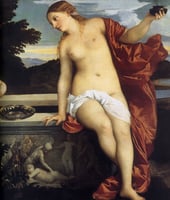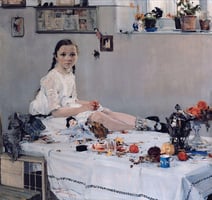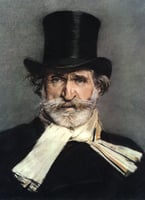Titian (c. 1488/1490 – 27 August 1576) was an Italian painter of the High Renaissance who lived in...
The Art of Raffaello Sanzio: An Exploration of His Life and Work
Raffaello Sanzio (April 6, 1483 – April 6, 1520) was an Italian painter and architect of the High Renaissance. His work is admired for its clarity of form, ease of composition, and visual achievement of the Neoplatonic ideal of human grandeur. Together with Michelangelo and Leonardo da Vinci, he forms the traditional trinity of great masters of that period.
Raffaello was born in the small town of Urbino, in the Marche region of central Italy. His father, Giovanni Santi, was an artist and poet of some renown. His mother, Magia di Battista Ciarla, was a gentlewoman from the same family of Urbino's ruling family, the Della Rovere.
Raffaello's father died when he was only 11 years old, and his mother soon after. He moved to Florence to live with his uncle Bartolommeo, who was a respected painter and teacher. Under his guidance, Raffaello quickly developed his skills as a painter, and soon began to attract the attention of major patrons.
At the age of 17, he began to work in the studio of the Florentine painter Pietro Perugino, where he was exposed to the techniques of the great masters of the Renaissance. He soon developed a style of his own, characterized by a love of color, a painterly approach, and a unique sense of composition.
During his time in Florence, Raffaello produced several frescoes, and painted several altarpieces and religious works. He also produced several smaller works, such as drawings, cartoons, and sketches. These works are remarkable for their delicate draftsmanship and technical brilliance.
Raffaello's most famous paintings are the Madonna of the Goldfinch, the Sistine Madonna, the Transfiguration, the Marriage of the Virgin, and The School of Athens, all of which are housed in the Vatican Museums. He also painted a large number of portraits, including those of Pope Julius II and Pope Leo X.
Raffaello was also a prolific architect, designing the Chigi Chapel in the church of Santa Maria del Popolo, the Church of Santa Maria della Pace, and the Farnesina Palace. His architectural works are characterized by a harmonious blend of ancient and modern elements, and are considered to be among the finest examples of Renaissance architecture.
Raffaello Sanzio died at the age of 37, following a fever. He is remembered as one of the greatest artists of the Renaissance, and his works have had a profound influence on the development of Western art.




